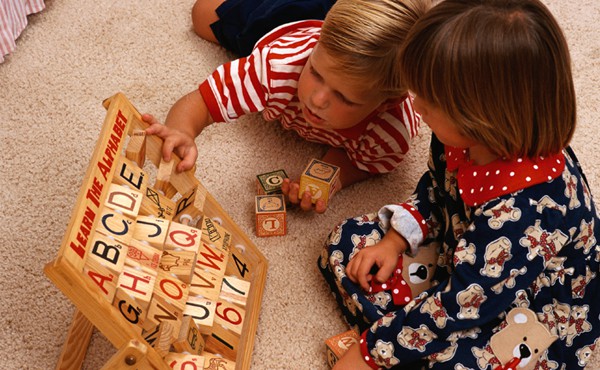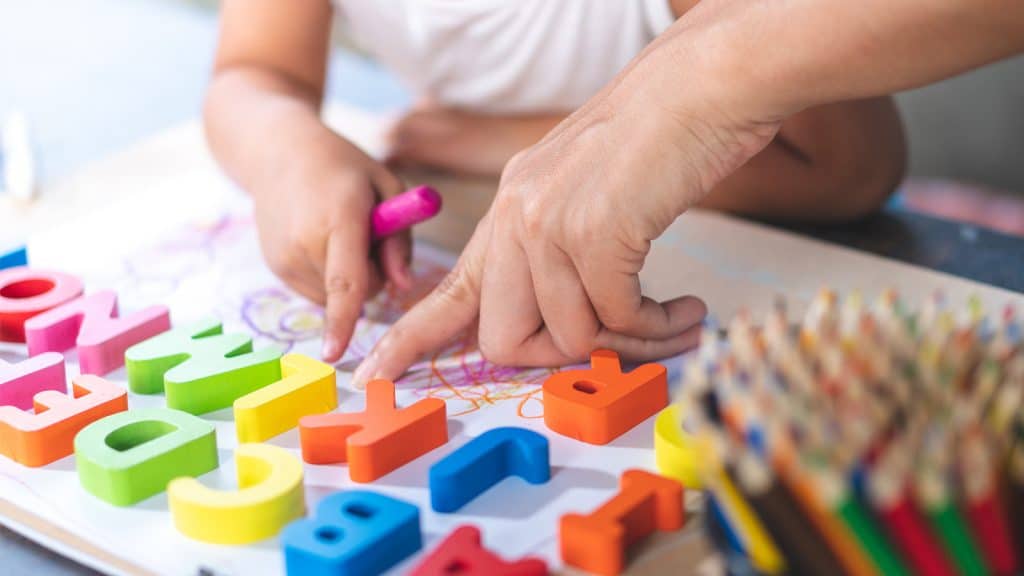Teaching your children how to read can help give them a solid chance at success in life. But you might be wondering how to go about teaching your child the necessary skills.
Although times, technologies, and circumstances change, two familiar methods of teaching children to read are still very effective: learning the alphabet and working on sight words.
Teaching the Alphabet to Help Early Readers
 Teaching the alphabet is as easy as ABC. Alphabet knowledge is a key predictor of reading success for children. Children need to know the names, shapes, and sounds of each letter. If you’re looking for ideas on how to teach the alphabet, there are several fun, engaging activities to choose from.
Teaching the alphabet is as easy as ABC. Alphabet knowledge is a key predictor of reading success for children. Children need to know the names, shapes, and sounds of each letter. If you’re looking for ideas on how to teach the alphabet, there are several fun, engaging activities to choose from.
One of the simplest alphabet teaching methods is singing the ABCs with your child. The traditional alphabet song is a great way to teach the names of the letters. You can find more alphabet songs on our YouTube channel.
Consistent routines and repeated activities help children learn. A routine learning time for the alphabet, ideally repeated each day at the same time, can help young children learn the alphabet. During this routine time, you and your child might sing the ABCs, go through an alphabet chart, use alphabet flash cards, or name the capital letters and lowercase letters together. Games and joint activities make learning fun.
Here are some fun printable activities and alphabet flash cards to incorporate into your learning activities:
Using Sight Words to Teach Reading
What are sight words? The Iowa Reading Research Center says there are two types:
The first are words that show up so often that it’s faster and better for the learning reader to memorize them, rather than try to spend the time sounding them out. The second type are those tricky words that don’t follow phonics rules, so they are difficult to sound out.
Some examples of sight words are be, but, do, have, she, they, was, what, with.
The concept of sight words has been around since the 1930s, when Dr. Edward William Dolch developed a list based on the most commonly-used words in the children’s books of his era. The Dolch sight word list is focused on PreK through 3rd grade readers. A more modern version was developed by Dr. Edward Fry in the 1950s, and updated in 1980. The Fry sight word list is based on the most common words to appear in reading materials used in grades 3 through 9.
One thing that hasn’t changed over the years is the importance of sight words in teaching reading. Sight words are especially valuable because they promote confidence for the child who’s learning to read. Starting early with sight words will help your child develop a large bank of words they can read, and that gives them a great foundation as they develop reading fluency.
Sight Word Activities and Practice Ideas for Families
Reading and writing together are among the most effective ways to teach sight words. Luckily, these are also among the most rewarding activities for child and parent alike!
Here are some ideas to make practicing sight words together fun and stress-free:
- Practice with this sight word worksheets PDF: Power word cards (en español)
- Play a matching game. Write each sight word on a pair of index cards or pieces of paper, then shuffle the deck and spread the words outface down. Have your child find and match words.
- Play flashlight find. Write words on pieces of paper and tape them to walls, ceilings, and around the house. Turn off the lights and have your child spot words with a flashlight.
- Write sight words on sticky notes and have your child swat them with a fly swatter or stick as you name them off.
- Grab some sidewalk chalk, a paintbrush, and some water and trace sight words on the sidewalk or driveway.
- Play “Wordo.” It’s like Bingo, but with sight words.
- Write sight words on paper plates. Once your child reads them off, toss them like a frisbee. For added fun, aim for a target.
- Sit down, cuddle up, and read some favorite stories together, looking for sight words as you go.
These and other activities, resources, and inspiration can be found here:
WeAreTeachers.com, “What Are Sight Words”
Mommy Evolution, “20+ Fun Ways To Practice Sight Words At Home”
The MeasuredMom.com, “25 Low-Prep Sight Word Activities”
PBS for Parents, “Trace Words on the Sidewalk”

